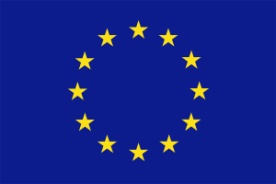The launch of ESA (European Space Agency) ExoMars rover is scheduled in 2018 and the sample return in the time frame between 2020 and 2030 [37]. After touching down on Mars, the rover will collect, and store (cache) up to 20 sets of Mars samples to be returned to the Earth. This mission poses unique engineering requirements, technical challenges and research opportunities for rover localization and mapping.
Specifically, these requirements, challenges and opportunities are involved in all three phases of the MSR (Mars Sample Return) rover mission – scheduled for the mid 2020s -, including rover landing, rover traversal, and collaborative Mars exploration. MSR poses two main challenges to collect and bring Martian rock and samples back to Earth for scientific research: First, more precise rover landing is needed for such a multi-rover scenario, since it is critical to land two – or more – rovers close to each other so that they can approach each other for effective communication and collaboration. Second, for two rovers, autonomous and precise rover localization within a large area explored is critical for proper joint operations and rendezvous. In this case, mapping areas several-km in dimension is necessary to cover both the local environment of single rovers and the global view of the region explored by two rovers. We assert that no previously developed approach can satisfy these requirements related to this goal. Third, the Mars sample acquisition, caching and subsequent exchanging activities involve large amounts of dynamic and complicated spatial operations in the Martian environment without any ground control points and with no hope of tele-operation. Such dynamic scenarios require both spatial and temporal awareness for successful executions of multi-rover operations. They will need spatial and temporal data integration, with relatively few previous studies available that investigate the spatial and temporal issues in an unified framework for seamlessly combining spatial data sets collected by multiple robotic platforms, including Mars orbiters and rovers.
Undoubtedly, there are be more and more spacecraft and robotic probes being sent to space to explore planets in the Solar System, as far as budgets allow. The design of these future missions needs to keep up with the advances in sensing technologies and robot vision. PRoViDE (Planetary Robotics Vision Data Exploitation) is proposed to cope with the increasing demands in this area and give easy access to changes and updates of the technologies. In such a way, the PRoViDE initiative will deliver means and methods of boosting the efficiency with which the information about planetary environments can be extracted from the raw science and engineering data returned to Earth. The ultimate impact will help lower the costs of operation and improve the quality and quantity of the scientific return from space missions.


